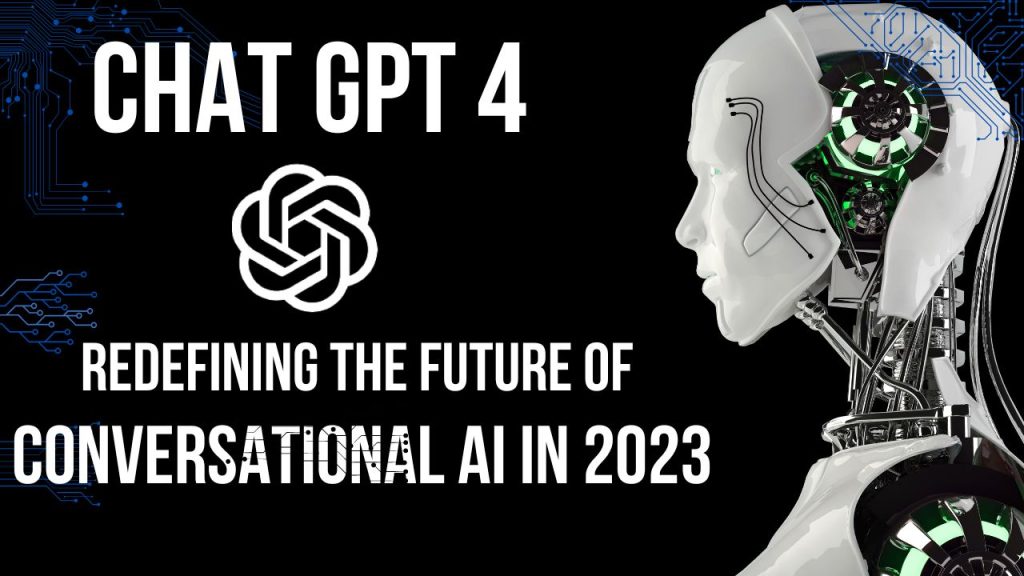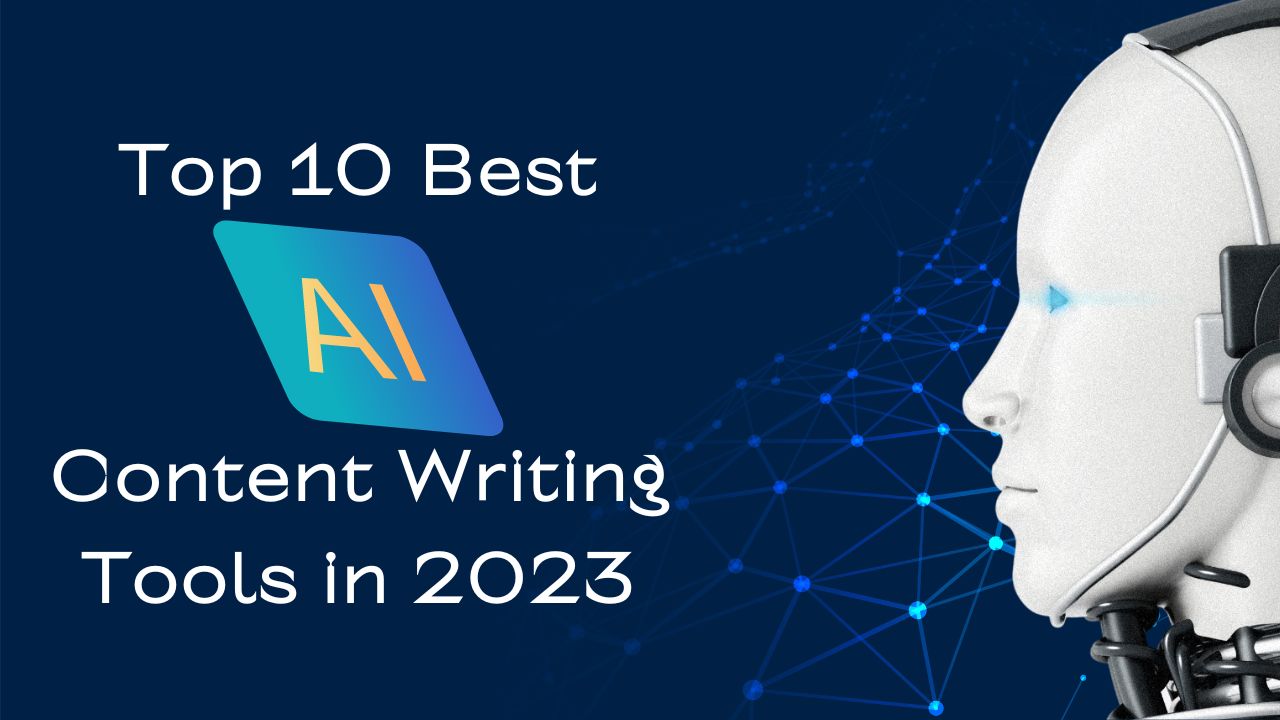Artificial Intelligence (AI) is advancing at an unprecedented pace, and the latest addition to this field is Chat GPT 4. Chat GPT 4 is an advanced language model built by OpenAI, based on the GPT-3.5 architecture, and trained on a massive dataset of human language. It is designed to not only answer questions but also ask them, making it a game-changer in the world of AI.
What is Chat GPT 4?
Chat GPT 4 is the fourth iteration of the OpenAI popular language model, GPT (Generative Pre-trained Transformer). GPT-4 is a language model that uses machine learning to generate human-like text based on the input it receives. It is trained on a massive dataset of human language, including books, articles, and websites, and can generate text in a wide range of styles and tones.

The main difference between ChatGPT-4 and its predecessors is its ability to ask questions. ChatGPT-4 can not only answer questions but also generate its own questions based on the input it receives. This makes ChatGPT-4 a powerful tool for tasks such as conversational AI, customer service, and chatbots.
How is Chat GPT-4 Different From GPT-3.5?
GPT-3.5 is limited to only text prompts, while the latest version of the large language model, Chat GPT-4, has expanded its capabilities to include image inputs that can recognize and analyze objects in pictures. Additionally, Chat GPT-4 is capable of generating responses of more than 25,000 words, which is a significant increase from GPT-3.5’s limit of about 3,000 words.
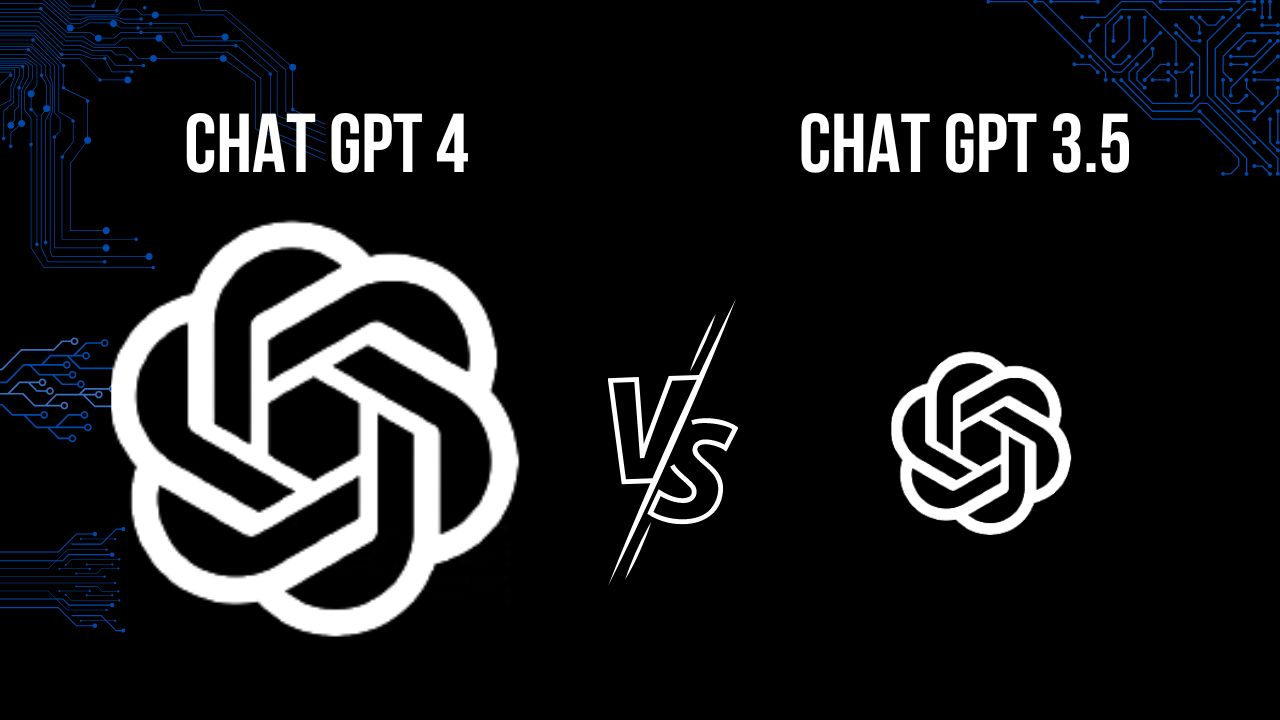
In terms of content filtering and factuality, GPT-4 is an improvement over its predecessor, as it is 82% less likely to generate responses containing disallowed content and scores 40% higher on certain tests of factuality. Developers using GPT-4 will also have the ability to choose the tone and verbosity of their AI, which was not possible with the previous iteration of the technology.
One of the exciting new features of GPT-4 is the ability to adopt different conversational styles, such as the Socratic method of responding to questions with questions. This is a departure from the fixed tone and style of the previous version. In the future, ChatGPT users will have the option to customize the chatbot’s tone and style of responses, providing greater flexibility and personalization options.
How Does ChatGPT-4 Work?
ChatGPT-4 is built on the GPT-3.5 architecture, which is a modified version of GPT-3. GPT-3 is one of the most advanced language models to date, with 175 billion parameters. GPT-3 is capable of generating human-like text, but it lacks the ability to ask questions.
To add this functionality, OpenAI made several modifications to the GPT-3 architecture, resulting in GPT-3.5. One of the key modifications was the addition of a question-answering module. This module allows ChatGPT-4 to generate questions based on the input it receives and then use its language generation capabilities to answer those questions.
ChatGPT-4 also has the ability to engage in multi-turn conversations. It can remember the context of the conversation and use that information to generate more relevant responses. For example, if you ask ChatGPT-4 a question and then follow up with another question related to the first, ChatGPT-4 will understand the connection between the two questions and generate a more meaningful response.
What Are the Applications of Chat GPT 4?
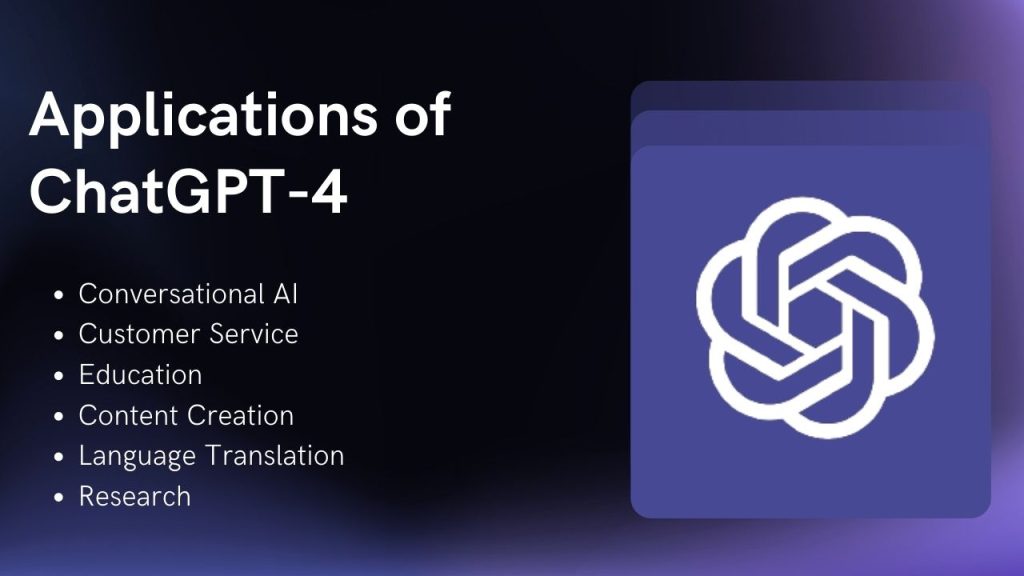
ChatGPT-4 has a wide range of applications, thanks to its ability to not only answer questions but also ask them. Here are some of the key applications of ChatGPT-4:
- Conversational AI: ChatGPT-4 can be used to create more human-like chatbots and virtual assistants. With its ability to ask questions, it can engage in more natural and fluid conversations with users.
- Customer Service: ChatGPT-4 can be used to improve customer service by providing more personalized and helpful responses to customer inquiries.
- Education: ChatGPT-4 can be used to create educational chatbots and virtual tutors that can answer students’ questions and provide personalized feedback.
- Content Creation: ChatGPT-4 can be used to generate high-quality content for websites, social media, and other platforms. It can generate content in a wide range of styles and tones, making it a versatile tool for content creation.
- Language Translation: ChatGPT-4 can be used to improve machine translation by generating more natural and accurate translations.
- Research: ChatGPT-4 can be used to assist with research by generating questions and hypotheses based on existing data and research.
What Are the Limitations of ChatGPT-4?
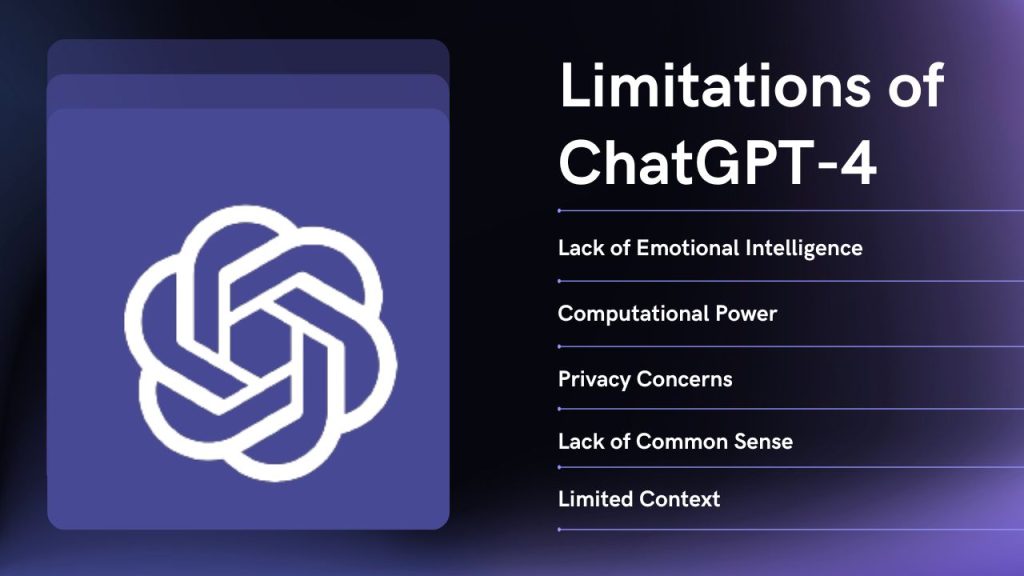
While ChatGPT-4 is a significant advancement in the field of AI, it still has some limitations that need to be addressed. Here are some of the key limitations of ChatGPT-4:
1. Biases: Like other language models, ChatGPT-4 can be biased based on the data it is trained on. If the data is biased, then the output generated by ChatGPT-4 can also be biased. It is essential to ensure that the training data is diverse and representative of different perspectives and backgrounds.
2. Lack of Common Sense: ChatGPT-4 relies solely on the information provided in the input text to generate its responses. It does not have common sense or real-world experience to draw from, which can lead to nonsensical or incorrect responses in certain situations.
3. Limited Context: While ChatGPT-4 has the ability to remember the context of a conversation, it can still be limited by the context it is given. If the context is ambiguous or incomplete, ChatGPT-4 may generate incorrect or irrelevant responses.
4. Lack of Emotional Intelligence: ChatGPT-4 does not have emotional intelligence and cannot understand or express emotions. This can be a limitation in applications where emotional responses are essential, such as mental health chatbots or virtual therapists.
5. Computational Power: ChatGPT-4 is a computationally intensive model that requires significant processing power to run. This can make it challenging to deploy in some applications, particularly those with limited computational resources.
6. Privacy Concerns: ChatGPT-4 is trained on large amounts of data, which can include personal information. There are concerns about how this data is collected, stored, and used, particularly in applications such as virtual assistants and chatbots that interact with users directly.
:
Hidden LinkChat GPT 4 New Features
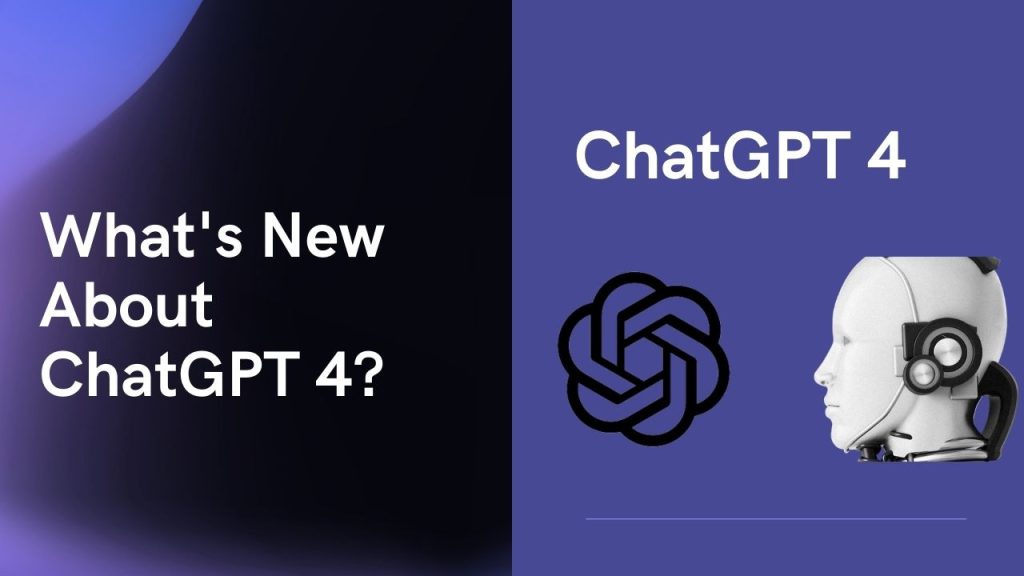
According to OpenAI, “GPT-4 is particularly skilled at tasks that demand advanced reasoning, sophisticated comprehension of instructions, and greater creativity.”
Since its recent launch, numerous users have already reported discovering various innovative applications for GPT-4, such as:
1. Provide image descriptions and create recipes.
GPT-4’s multimodal capability enables users to upload images, such as a picture of flour, butter, eggs, and milk, and receive recommendations for delicious treats that can be made with those ingredients. However, this feature does not seem to be currently available to the public subscribers of GPT-4.
2. Develop video games using code.
Twitter users have been showcasing GPT-4’s ability to code complete video games within their web browsers in just a matter of minutes. For instance, a user with no prior knowledge of JavaScript, a popular programming language for creating websites, recreated the well-known game ‘Snake’ using GPT-4.
3. Develop a whole website for you
GPT-4 has been utilized to convert a manually drawn sketch into a practical HTML page, as shown in the example below.
Conclusion
ChatGPT-4 is a significant advancement in the field of AI, with its ability to not only answer questions but also ask them. Its applications are wide-ranging, from conversational AI and customer service to education and content creation. However, like all AI models, it has its limitations, including biases, lack of common sense, limited context, and computational power requirements. It is essential to consider these limitations when using ChatGPT-4 and to work towards addressing them to improve its effectiveness and impact.
Related Articles:
Top 10 Best AI Content Writing Tools in 2023
Ans. While GPT-4 may not have the ability to generate images (which is a task handled by OpenAI’s DALL-E), its potential for computer vision is impressive.
During a live demonstration of the AI’s capabilities, OpenAI’s president and co-founder, Greg Brockman, showcased how GPT-4 could create an entire website based solely on a hand-drawn note.
Ans. Currently, Chat GPT-4 is not available on the free version of ChatGPT. However, there is an alternative option available, which is to use Bing AI Chat. This is because Bing AI Chat is powered by OpenAI’s GPT-4 model, which has been in use for a while.
Therefore, if you’ve been using Bing’s AI-powered chat, you’ve actually been utilizing GPT-4 without realizing it. In case you’re concerned about the difference in the quality of responses between GPT-4 on Bing Chat and GPT-4 on ChatGPT, there’s no need to panic.
Ans. ChatGPT 4 is an updated version of OpenAI’s chatbot, with a range of new features to explore. Some of these features include:
1. Providing image descriptions
2. Facilitating the creation of recipes
3. Enabling the development of games using code
4. Allowing for the creation of entire websites with the help of ChatGPT 4.

